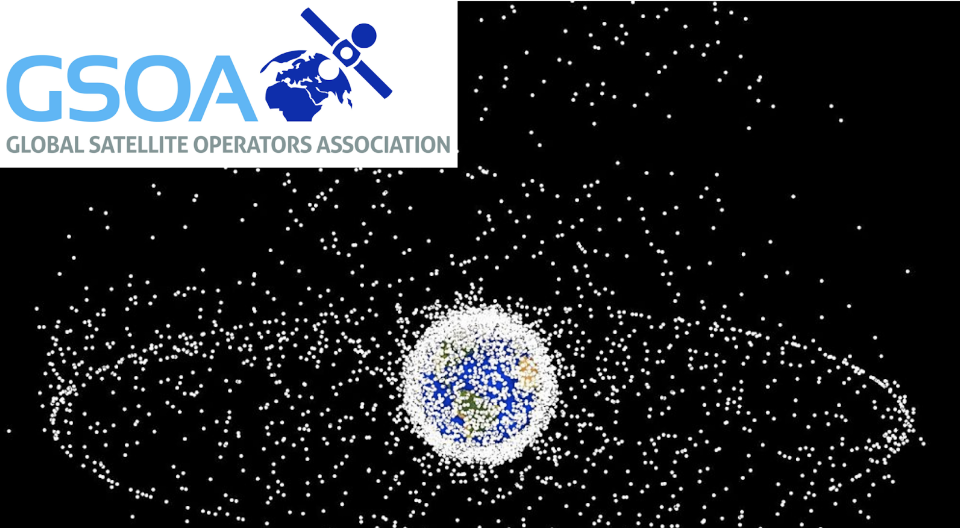The Brussels-based industry body, the Global Satellite Operators Association (GSOA), has released a document titled ‘Code of Conduct on Space Sustainability’ last week. Currently headed by the leaders of satcom companies like Canada’s Telesat, UAE’s Yahsat, and France’s Eutelsat, the document enlists the responsible practices and space sustainability behaviours that its members will follow in the coming years. GSOA’s intentions through this code of conduct are:
- it intends to protect astronaut crew working in orbits from debris collision;
- reduce the negative impact of debris on astronomy;
- minimise the hazards of non-trackable debris, and
- mitigate the risk of in-orbit collision.
The document could not have come at a better time. Especially when numerous constellations with satellites ranging up to twelve thousand have been under works – either planned or being deployed. Such constellations are liked by satellite and launch vehicle manufacturers and service providers alike. SpaceX’s Starlink, not a member of GSOA, is said to have planned more than twelve thousand satellites in its low-Earth-orbit constellation. Similarly, the Chinese state-owned company, the China Satellite Network Group also has filed, in 2021, plans to launch a constellation of thirteen thousand satellites. Amazon, a GSOA member, with its Kuiper constellation, is planning to add another 3236 small satellites in the about-to-be heavily congested LEO. Now, why did we point at these three companies? The reason is all three have a sister concern, SpaceX, CASIC, and Blue Origin that can have space launch capability; and having a humongous number of satellites is a sure-shot way of ensuring revenue from launches, and revenues from satcom downstream services.
Most satcom players do not have space launch capabilities of their own. Some of them are offering services from placing their satellites in the more sustainable Geostationary-Earth-Orbit (GEO) and Middle Earth Orbits (MEO) that require a much lesser number, almost a few hundred satellites. If a constellation with a reduced number of satellites can perform optimally and equivalent to a large constellation, the code of conduct, formed by the 70 plus GSOA members, seems to be hinting at a collective consciousness that large constellations are a big no-no. The four codes of conduct GSOA has enumerated seem to be strengthening the industry’s case against large satellite constellations. These codes are not only limited to communication satellites but their ambit can be extended to remote-sensing satellite constellations.
The codes of conduct, attested by GSOA’s 70+ members, is also a collective consciousness of not letting a few companies squatter in all orbital slots. This consciousness is based on the global precedence set by the United Nations Committee on the Peaceful Uses of Outer Space (COPUOS) non-binding Guidelines for the Long-term Sustainability of Space Activities and Articles 44 and 45 of the constitution of the International Telecommunications Union. While GSOA is taking stringent steps at an industry level, the US’s Federal Communications Commission, which governs the world’s biggest satcom players, in 2022 made a rule of deorbiting US-origin LEO satellites that are older than 5 years. However, deorbiting thousands of satellites after 5 years does no good to the upper atmosphere, which is likely to be littered with tonnes of metals emanating from satellites burnt during atmospheric re-entry. While the GSOA has factored in the concerns of the astronomy community which finds dense satellite constellations interfering with night- and day-time sky observations, it is yet to factor in the atmospheric pollution concerns caused by metals like aluminium, iron, titanium, chromium, nickel, silver, copper, zinc, lead, magnesium, beryllium among others.
The satcom sector is the biggest propeller of the global space industry. GSOA realises the immense profit margins, comprehends the role of its members and non-members in securing those profit margins and yet at the same time also realises that the sustainability factor is fast becoming the crux of global rule-making, at least for limiting the absurdly high number of satellites in the announced constellations. On 13th November, SpaceX investor Ron Baron told the US media that Starlink will be spun off and made public by 2027. While this IPO comes to reality, the biggest hurdle Starlink or any other public-going satcom player will have to fulfil sustainability criteria. What GSOA has done, voluntarily, as an industry body is set the sustainability perimeter, not just for its 70 or so members, but also for non-members.


